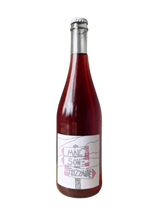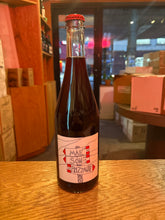In 2022, third-generation winemaker Matteo Furlani began a new project in addition to his label Cantina Furlani: after years of selling grapes from a 6 hectare plot, he began searching for a way to bottle them for his own wines for the first time — and now is launching a new label, Mae Son, in collaboration with export manager Claudio Coronato and Jenny and Francois Selections. The label is a tribute to the importance of family and family work, as well as the careful craftsmanship of their wines. The name is a playful nod to the beginning of each family member’s name: M for Matteo, A for his wife, Annalisa, and their daughter, Alessia, and E for their son Edoardo. The pronunciation further sheds light on the intimate story behind the label: in English, it’s pronounced “my son,” while in French, it can be read as “maison,” meaning “my home.”
Grapes: old indigenous varietals including Pavana, Rosara, Negrara and Turca
Vineyard: Calcareous soil with clay and porphyry content, medium textured, located 300-720m above sea level — the grapes benefit from fresh Northern winds and the famous Ora del Garda winds
Making of: The grapes are harvested by hand when they achieve ideal ripeness, typically in late September. Spontaneous fermentation with indigenous yeasts takes place in open stainless steel vats, with 20 days of skin contact. The freshly fermented wine is then aged on the lees in steel vats before aging in barrels for 6 months. It is then racked and undergoes a second fermentation in bottle, where it rests for 4 months.
Grapes: old indigenous varietals including Pavana, Rosara, Negrara and Turca
Vineyard: Calcareous soil with clay and porphyry content, medium textured, located 300-720m above sea level — the grapes benefit from fresh Northern winds and the famous Ora del Garda winds
Making of: The grapes are harvested by hand when they achieve ideal ripeness, typically in late September. Spontaneous fermentation with indigenous yeasts takes place in open stainless steel vats, with 20 days of skin contact. The freshly fermented wine is then aged on the lees in steel vats before aging in barrels for 6 months. It is then racked and undergoes a second fermentation in bottle, where it rests for 4 months.




